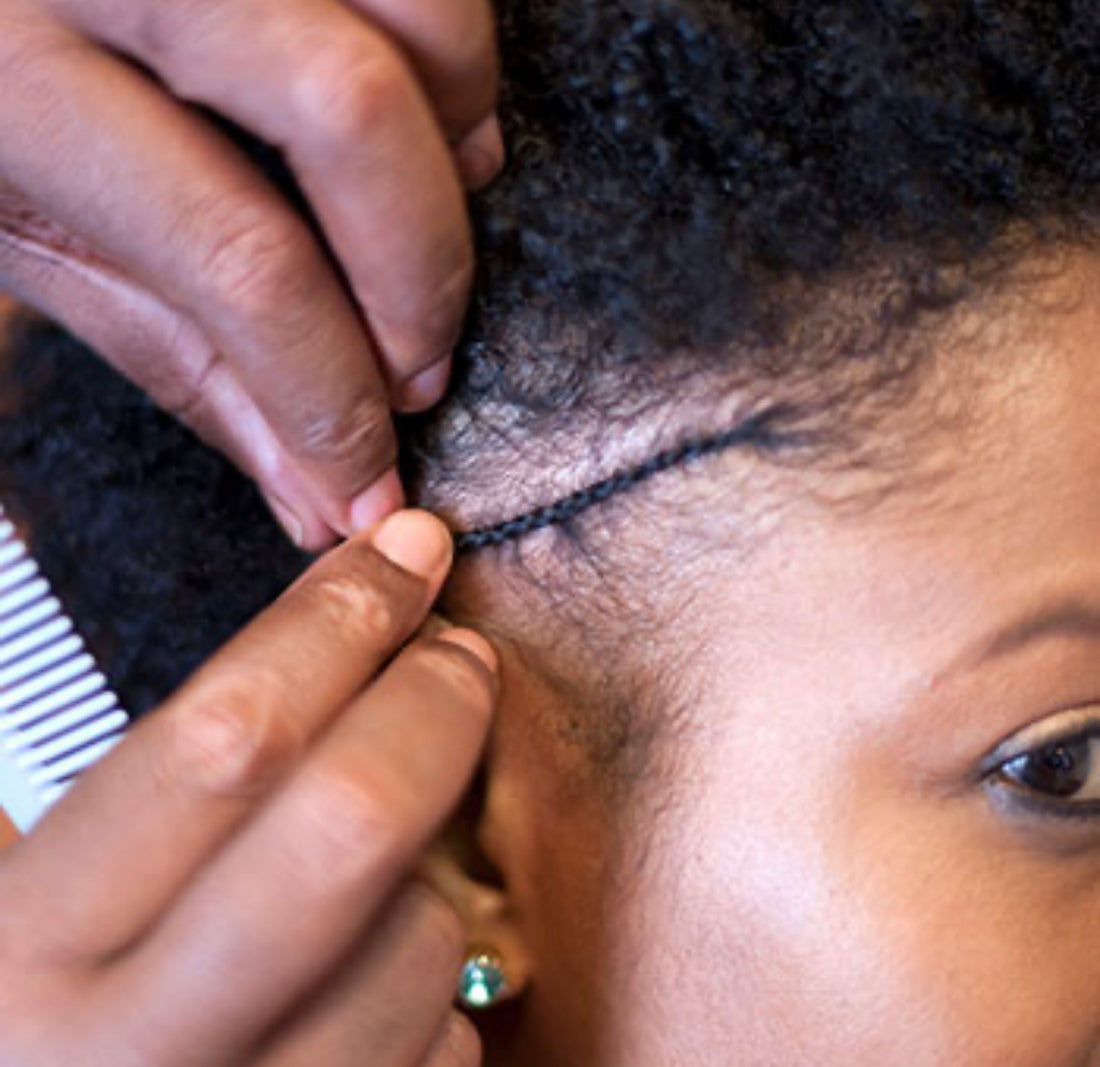
Traction Alopecia and How To Reverse It
Share
Traction Alopecia
Traction alopecia is something we can learn about. It often happens to Black women with curly hair. It's because some hairstyles, like braids and buns, can pull on your hair a little too hard. This pulling can make your hair roots unhappy, and they might stop growing hair. But remember, there are things we can do to take care of our hair and keep it healthy.
If you’re wondering if you have traction alopecia, don't worry! There are signs to look out for, like your hair breaking near your forehead or your hairline moving back a bit. It's like a little message from your hair, saying, "Hey, let's be kind to our roots!" And guess what? If we notice these signs early, we can make changes to our hairstyles and keep our hair strong and happy.
Remember, traction alopecia doesn't pick favorites – it can happen to anyone who wears tight hairstyles, not just Black women. But here's the good news: we can help our hair heal and grow again! If your scalp feels a little sore or you see bumps, don't be scared. It's your hair's way of telling you it needs some TLC. So what can you do?
Eliminate Tight Hairstyles
Everyone has a go-to hairdo that they're somewhat emotionally attached to. But if your all-day messy bun is putting too much tension on your follicles, it's time to let it go—at least for a little while. The simplest traction alopecia treatment at home is to keep your distance from any hairstyles that are pulled tight, such as:
- Cornrows
- Buns
- Ponytails
- Extensions
- Braids
The key is to give your hair and scalp a chance to rest and heal so that your follicles aren't under constant stress.
Swap Elastic Hair Ties for Satin or Silk Scrunchies
What's the best treatment for traction alopecia? Keeping your hair loose. But if you can't imagine ditching your beloved ponytail, there's no need to go cold turkey. Just make a few adjustments to how you're securing your tresses so that it's not as tight.
Try swapping your regular hair ties for satin/silk scrunchies, or even a silk scarf. These gentler options will help to reduce the amount of stress on your hair, giving your follicles some much-needed relief.
Avoid Chemical & Heat Treatments
Give your hair a break! That means taking a breather from trendy treatments like:
- Relaxers
- Texturizers
- Hot oil treatments
- Coloring
- Bleaching
- Perming
Increase Your Protein and Iron
Treating traction alopecia starts from the inside out. Protein and iron are two essential nutrients for hair growth. Without them, your locks will be weak and more susceptible to breakage.
Feed Your Follicles!
Your hair follicles need consistent nourishment externally as well. Here are just four of the natural ingredients we infuse into our Herbal Follicle Stimulator Oil that can help regrow hair.
(click picture for link)
1. **Peppermint Oil:** Peppermint oil stimulates blood flow to the scalp, aiding in healthier hair growth and potentially assisting in traction alopecia recovery.
2. **Green Tea:** Rich in antioxidants, green tea may block DHT, a hormone linked to hair loss, making it beneficial for those with traction alopecia.
3. **Jamaican Black Castor Oil:** This oil nourishes the scalp, reducing dandruff, strengthening hair strands, and promoting hair growth, making it helpful for traction alopecia.
4. ** Amla:** Helps with traction alopecia by strengthening hair follicles, promoting a healthy scalp, and stimulating hair growth through increased blood circulation. Its rich vitamin C and antioxidant content support stronger, more resilient hair. Additionally, its antimicrobial properties contribute to a healthier scalp environment, reducing the risk of hair loss.

